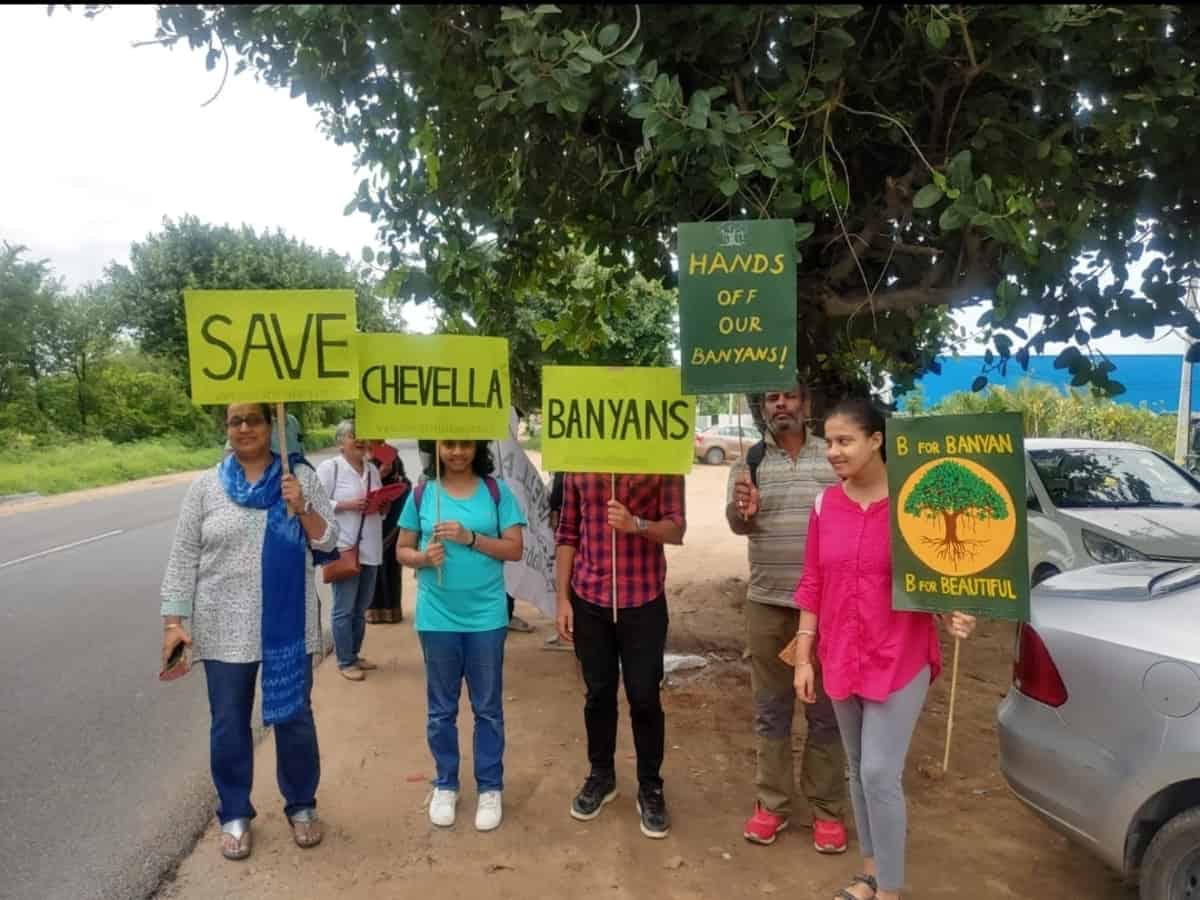
Hyderabad: In its quest to save the majestic banyan trees of Chevella, a citizen’s group, the Nature Lovers of Hyderabad has been doing all they can through petitions, civic actions and representations. There is yet to be any response from officials.
Saving Chevella Banyans
The Nature Lovers are currently geotagging each banyan tree so they can all be documented and protected.
To geotag all the trees, a team of nature activists travelled to Chevella and chronicled all the details necessary.
“Twenty volunteers ranging in age from 12 to 68, spent a cumulative 200 hours on the road geo-tagging, photographing and capturing details of every one of the 914 banyans on the 46.6 kilometer stretch. The details captured included general health of the tree, thickness of trunk (girth), existence of prop roots, extent of interlocking canopy, and most importantly – signs of burning, cutting and/or felling,” wrote activist Natasha Ramanathan in a dossier put together by the group.
Why are Banyans being geo-tagged currently?
‘Nature lovers of Hyderabad’ has been leading this campaign for the past many years, starting with a citizen’s protest held in 2018, called ‘Save Banyans Trees of Chevella.’ The group was organised after it was reported that the trees were in danger after the central government sanctioned a proposal for road widening on the Hyderabad-Chevella road (NH163).
What sets apart the group is that it is a volunteer-based group that works solely on the conservation and protection of a certain type of tree in the danger of immediate felling/translocation.
In the group’s dossier, the activists point out that tree-translocation, though favoured over tree-felling, is not a feasible idea. “Trees are not adequately prepped for translocation; most of a tree’s crown and root system are pruned during the process, and the receptor site is chosen based on availability and not really for translocation suitability. Adequate care is not given post-translocation. The net result: a majority of the trees die of translocation shock defeating the purpose (and wasting resources),” they note.
“Beginning from Moinabad to Vikarabad and beyond, there are more than 1100 banyan trees, and for over a hundred years. They are our legacy that our elders passed on to us, and generations of people have enjoyed the banyan tree route,” said the protestors.
The group calls for the declaration of the stretch of the highway till Vikarabad, which includes the reserve forests/scrub habitats at Mudimyal and Kandlapally abutting NH-163, as the ‘Telangana Biodiversity Heritage Road.’



